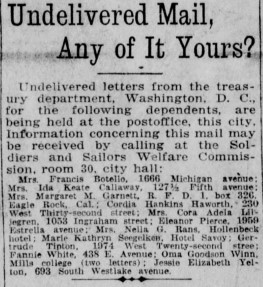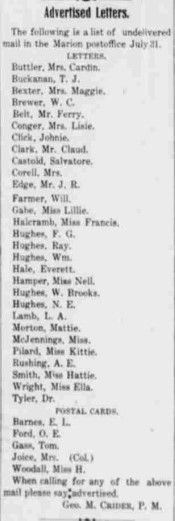
Ever wondered how you can trace an ancestor who seems to disappear between census years?
Buried deep in many 19th-century newspapers are Post Office Notices — short lists of letters that went unclaimed. These “undelivered mail” columns provide unexpected proof of where someone lived, worked, or passed through at a specific moment in time.
Where to Find Them:
Look in the legal, local, or postal sections of newspapers from the 1800s through the early 1900s. Many towns published monthly or weekly “Letters Remaining in the Post Office” lists, often arranged alphabetically by surname. Larger cities sometimes included separate lists for men, women, and businesses, or noted how long each letter had been advertised.
What You’ll Discover:
These simple rosters can confirm that an ancestor was present — or expected — in a town at a particular date. Some notices identify businesses (“J. R. Miller & Co.”) or add remarks such as “advertised twice,” hinting that the recipient had moved away or passed on. When compared across issues, they can trace a family’s comings and goings, especially before formal address directories existed.
Why It Matters for Genealogy:
An undelivered-mail notice might be the only surviving clue that places your ancestor in a community during a gap year, migration, or transition period. Combined with census, tax, or city-directory research, these lists can help verify residence, reveal lost family members, or signal the end of a local chapter in someone’s life story.
If your ancestor seemed to vanish between records, search the phrase “Letters Remaining in the Post Office” in local newspapers — you might just find their name waiting to be claimed.
Examples:

